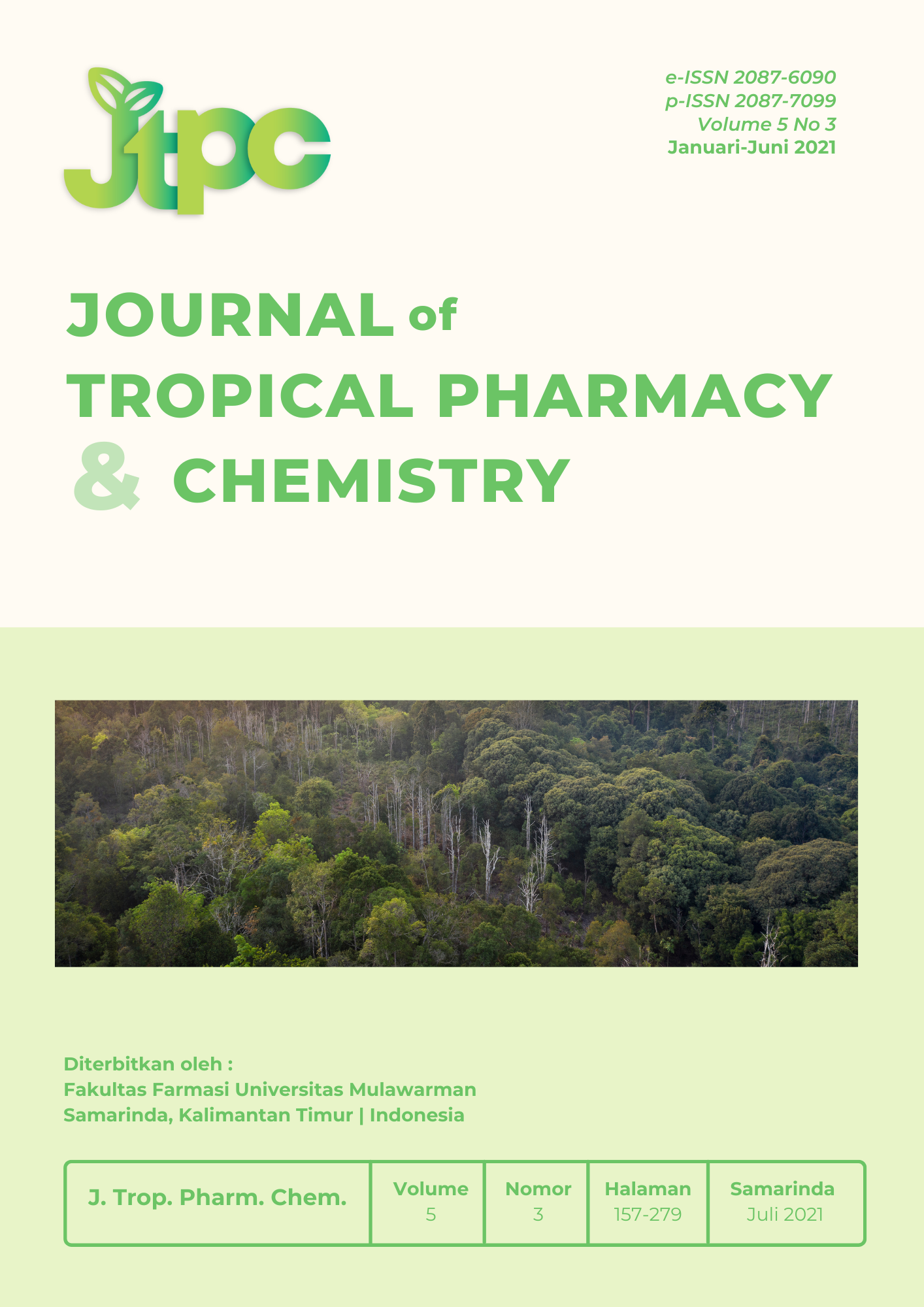Phytochemical, Proximate, and Vitamin C Content in Morinda citrifolia (Noni)
DOI:
https://doi.org/10.30872/j.trop.pharm.chem.v5i3.200Keywords:
noni fruit, proximate analysis, phytochemical screeningAbstract
Morinda citrifolia, L commonly called noni, has a long history as a medicinal plant and is reported to have a broad range of therapeutic effects, including antibacterial, antiviral, antifungal, antitumor, antihelmin, analgesic, hypotensive, anti-inflammatory, and immune enhancing effects. Photochemical analyses of ethanol and hexane extracts of noni fruit revealed the presence of flavonoids, terpenoids, alkaloids and steroids. Proximate composition of the noni fruit revealed a moisture content of 54.21, crude protein 2.18, crude fat 3.25, crude fiber 4.49, ash 0.73 and carbohydrate 35.14%. The Vitamin C content was estimated using iodometric titration and found to be 134.10 mg/100g. This suggests that the noni fruit can if consumed can help promote good health.
Downloads
References
[1] Farnsworth, N.R. and Soejarto, D.D. 1991. Conservation of medicinal plants. Global Importance of Medicinal Plants, 26: 25-34.
[2] Jamshidi-Kia, F., Lorigooini, Z. and Amini-Khoei, H. 2018. Medicinal plants: Past history and future perspective. Journal of Herbmed Pharmacology. 7(1): 1-7.
[3] Maggi, F. and Benelli, G. 2018. Essential oils from aromatic and medicinal plants as effective weapons against mosquito vectors of public health importance. Mosquito-borne Diseases, 10: 69–129.
[4] Houghton, P.J. The role of plants in traditional medicine and current therapy. 1995. Journal of Alternative and Complementary Medicine, 2(1): 131–143.
[5] Nugroho, K.P.A., Rahardjo, M. and Jovitatera, A. 2018. The optimization of pudding formulation using noni (Morinda citrifolia L.) Indonesian Journal of Agricultural Research, 1(3): 280–288.
[6] Chan-Blanco, Y., Vaillant, F., Perez, A.M., Reynes, M., Brillouet, J-M. and Brat, P. 2006. The noni fruit (Morinda citrifolia L.): A review of agricultural research, nutritional and therapeutic properties. Journal of Food Composition and Analysis, 19(6-7): 645–654.
[7] Etsuyankpa, M.B., Ndamitso, M.M., Oluwatoyin, I.V., Ibrahim, H. and Ogah, S.P.I. 2017. Chemical analysis of noni (Morinda citrofolia) seeds and the characterization of the seeds oil. American Journal of Applied Chemistry, 5(4): 57-61.




